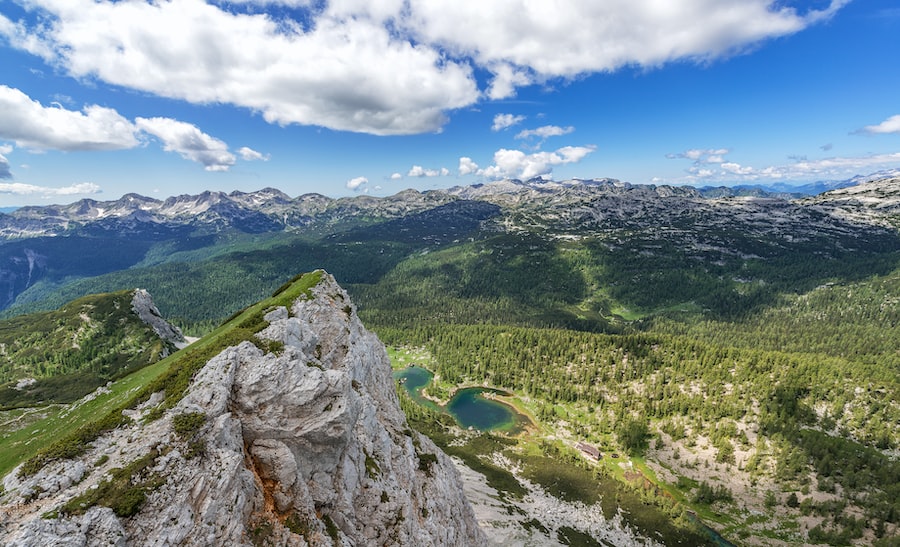Banishing the Beauty: How to Remove Lilies of the Valley Safely and Effectively

Lilies of the Valley, also known as Convallaria majalis, are a popular choice for gardens due to their delicate white flowers and sweet fragrance. These plants are native to Europe and have been cultivated for centuries for their beauty and elegance. Lilies of the Valley are often used in bridal bouquets and floral arrangements due to their romantic and timeless appeal.
The flowers of lilies of the valley are small and bell-shaped, hanging from a slender stem. They bloom in the spring, usually in May, and their fragrance fills the air with a sweet, intoxicating scent. The white flowers contrast beautifully against the dark green foliage, creating a stunning display in any garden.
Key Takeaways
- Lilies of the Valley are beautiful but can pose risks to pets and humans.
- Removing Lilies of the Valley is important to prevent accidental ingestion and poisoning.
- Tools needed for removal include gloves, a shovel, and a tarp.
- Follow a step-by-step guide to safely remove Lilies of the Valley.
- Dispose of removed plants properly and take precautions to prevent regrowth.
Understanding the Risks of Lilies of the Valley
While lilies of the valley may be beautiful, it is important to understand that they can be toxic. All parts of the plant contain cardiac glycosides, which can be harmful if ingested. This toxicity can pose a risk to pets and children who may be tempted to eat the berries or chew on the leaves or stems.
Ingesting lilies of the valley can cause symptoms such as nausea, vomiting, abdominal pain, irregular heartbeat, and even seizures. It is important to keep an eye on children and pets when they are near these plants and take precautions to prevent accidental ingestion.
Why Remove Lilies of the Valley?
There are several reasons why one might choose to remove lilies of the valley from their garden. One of the main reasons is safety concerns, especially if there are children or pets in the household. Removing these toxic plants can help prevent accidental ingestion and potential harm.
Another reason to remove lilies of the valley is their invasive growth habit. These plants spread rapidly through underground rhizomes, forming dense colonies that can crowd out other plants in the garden. This can lead to a lack of biodiversity and an imbalance in the ecosystem.
Removing lilies of the valley can also benefit the overall health and aesthetics of the garden. By removing these plants, you can create space for other plants to thrive and create a more diverse and visually appealing landscape.
Preparing for Removal: Tools and Equipment Needed
| Tools and Equipment Needed | Description |
|---|---|
| Protective Gear | Gloves, goggles, respirator, and other protective clothing to prevent exposure to hazardous materials |
| Hand Tools | Screwdrivers, pliers, wrenches, hammers, and other hand tools for disassembling equipment |
| Power Tools | Drills, saws, grinders, and other power tools for cutting, grinding, and drilling |
| Chemicals | Cleaning agents, solvents, and other chemicals for removing adhesives, paints, and other coatings |
| Containers | Bags, boxes, and other containers for storing removed parts and hazardous materials |
| Transportation | Trucks, trailers, and other vehicles for transporting equipment and hazardous materials to disposal sites |
Before you begin removing lilies of the valley, it is important to gather the necessary tools and equipment. Here is a list of items you will need:
1. Garden gloves: These will protect your hands from any potential irritation or allergic reactions.
2. Hand trowel: A hand trowel is essential for digging up the roots of the lilies of the valley.
3. Garden fork: A garden fork can be used to loosen the soil around the plants, making it easier to remove them.
4. Pruning shears: Pruning shears are useful for cutting back any foliage or stems before digging up the plants.
5. Wheelbarrow or garden waste bag: You will need a container to collect the removed plants and any other garden waste.
Step-by-Step Guide: How to Safely Remove Lilies of the Valley
1. Start by cutting back any foliage or stems of the lilies of the valley using pruning shears. This will make it easier to access the roots.
2. Use a garden fork to loosen the soil around the plants. Be careful not to damage any surrounding plants or roots.
3. Once the soil is loosened, use a hand trowel to dig up the roots of the lilies of the valley. Start at the outer edge of the plant and work your way towards the center, gently lifting and loosening the soil as you go.
4. As you dig up each plant, shake off any excess soil and place it in a wheelbarrow or garden waste bag.
5. Continue this process until all of the lilies of the valley have been removed from the area.
6. Dispose of the removed plants properly, either by composting them or by following your local waste disposal guidelines.
7. After removing the lilies of the valley, fill in any holes or gaps in the soil with fresh soil and replant with desired plants.
Disposing of Lilies of the Valley: What to Do with Removed Plants

Once you have removed the lilies of the valley from your garden, you will need to decide how to dispose of them properly. One option is to compost the plants, as long as you have a compost pile that reaches high temperatures and can break down toxic plants. However, it is important to note that lilies of the valley can be difficult to compost due to their tough and fibrous roots.
If composting is not an option, you can dispose of the plants in your regular green waste bin or take them to a local green waste facility. It is important not to throw them in the regular trash, as they can still pose a risk if ingested by animals or children.
It is also worth mentioning that lilies of the valley should never be used in floral arrangements or bouquets if there are pets or children in the household. Even after being cut, these plants can still be toxic if ingested.
Preventing Lilies of the Valley from Regrowing
After removing lilies of the valley from your garden, it is important to take steps to prevent them from regrowing. Here are some strategies you can use:
1. Remove all roots: Make sure to dig up all of the roots when removing lilies of the valley. Even small pieces left behind can regrow and spread.
2. Use barriers: Consider using physical barriers such as landscape fabric or plastic edging to prevent lilies of the valley from spreading into other areas of your garden.
3. Ongoing maintenance: Regularly inspect your garden for any signs of regrowth and promptly remove any lilies of the valley that appear. This will help prevent them from establishing themselves again.
Alternative Methods for Removing Lilies of the Valley
If you are dealing with a large infestation of lilies of the valley or prefer not to remove them manually, there are alternative methods you can consider.
One option is to use herbicides specifically designed to target lilies of the valley. These herbicides contain chemicals that can kill the plants without harming other desirable plants in your garden. However, it is important to follow the instructions carefully and take precautions to protect yourself and the environment.
Another alternative method is to use natural remedies such as vinegar or boiling water. These can be poured directly onto the plants to kill them. However, it is important to note that these methods may not be as effective as manual removal or herbicides, especially for larger infestations.
Safety Precautions to Take During Removal
When removing lilies of the valley, it is important to take certain safety precautions to protect yourself and others. Here are some important safety tips:
1. Wear gloves: Always wear gloves when handling lilies of the valley, as they can cause skin irritation or allergic reactions in some individuals.
2. Wear protective clothing: Consider wearing long sleeves and pants to protect your skin from any potential contact with the plants.
3. Avoid touching your face: Be mindful not to touch your face or eyes while working with lilies of the valley, as this can transfer any potential irritants.
4. Wash your hands: After removing lilies of the valley, make sure to wash your hands thoroughly with soap and water to remove any potential toxins.
5. Keep children and pets away: While removing lilies of the valley, it is important to keep children and pets away from the area to prevent accidental ingestion or contact with the plants.
Enjoying a Beautiful Garden without Lilies of the Valley
In conclusion, while lilies of the valley may be beautiful, they can pose risks to children, pets, and the overall health of your garden. By taking the necessary steps to remove and prevent their regrowth, you can create a safe and visually appealing garden.
Remember to gather the necessary tools and equipment before removing lilies of the valley, and follow the step-by-step guide to ensure safe and effective removal. Dispose of the plants properly and take precautions to prevent regrowth.
By removing lilies of the valley, you can create space for other plants to thrive and enjoy a beautiful garden without the risks associated with these toxic plants. Take action today and create a safe and stunning garden for all to enjoy.



